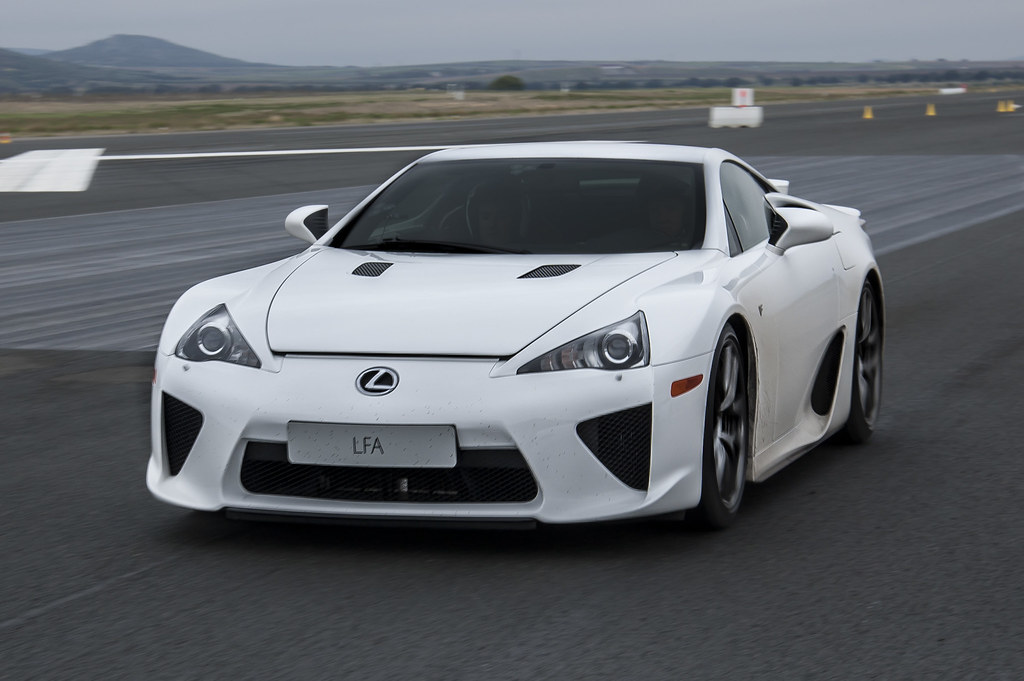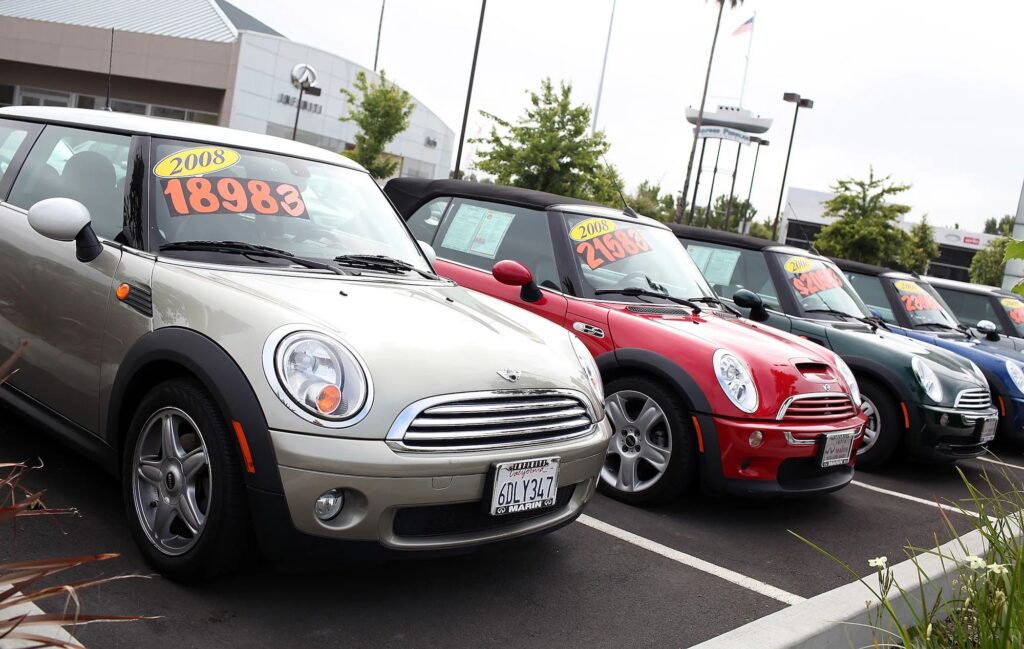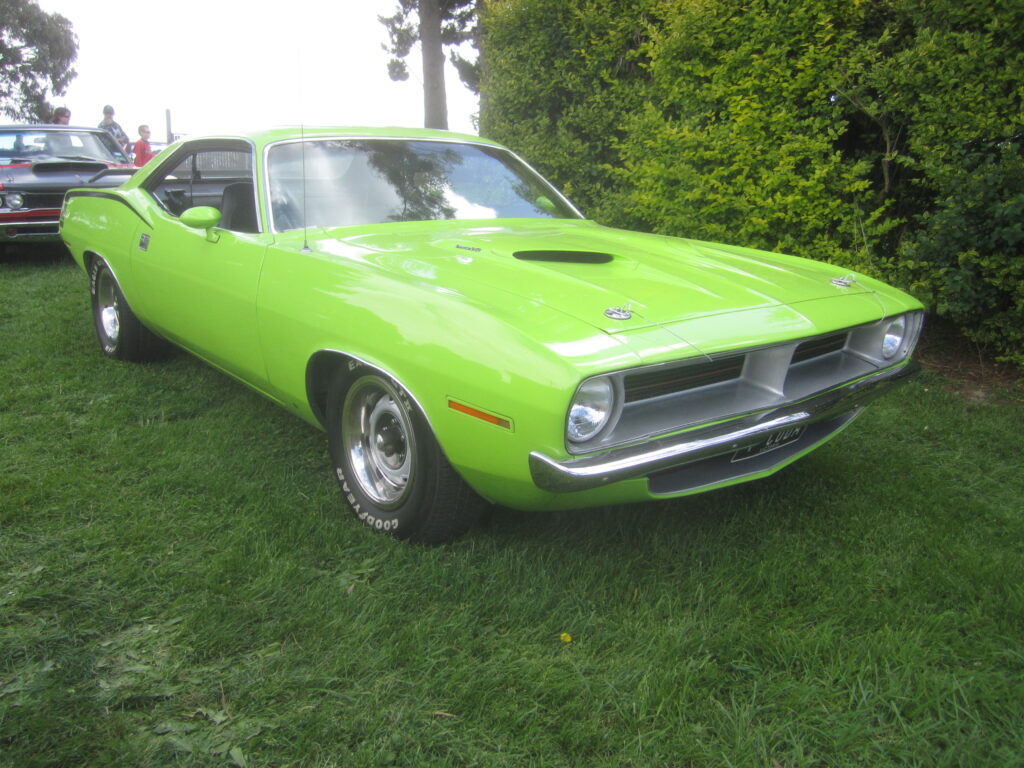
The automotive landscape, my friends, is undergoing a seismic, almost tectonic, shift beneath our very tires. For generations, the car wasn’t just a hunk of metal and rubber; it was an extension of self, a roaring symbol of freedom, independence, and the undisputed rite of passage into adulthood. Those of us who cut our teeth on internal combustion grew up with the insistent rumble of an engine in our hearts, truly believing that wrestling a driver’s license was the ultimate declaration of maturity.
It was a source of undeniable pride, putting you in charge of a multi-ton beast, a visceral demonstration of strength and, dare I say, virility for both men and women alike. That wheeled chariot gave you street cred among your late-teen peers, and more importantly, it was your golden ticket to escape the heavy-handed control of your parents, paving the path to rightful independence.
But here’s the undeniable, sometimes uncomfortable, rub: the latest generations, particularly Millennials and the emerging Gen Z, aren’t exactly buying into this classic narrative. Not by a long shot. They’re less car-crazed, significantly less eager to embrace the hallowed halls of ownership, and frankly, far less interested in even getting a driver’s license with the same earnestness of prior generations. We’re seeing purchases drop precipitously, surveys consistently showing car ownership plummeting on their priority lists, and if you chat with them, many will openly admit they actually eschew driving whenever they can find a viable alternative. This isn’t just a minor blip; it’s a fundamental reimagining of what a car means, driven by an intertwined set of whys and wherefores that are causing outright consternation and difficulties for those who make automobiles. Look, there’s no sense in griping about it; as they say, it is the new norm. This cultural sea-change demands our immediate, unfiltered attention. We’re talking about a generation often saddled with student debt, inherently wary of making large capital purchases, and increasingly aware of the genuine bag of hassles that come with car ownership – think parking nightmares, the soul-crushing cost of insurance, and the bewildering morass of auto repair options. Driving itself, once perceived as a thrilling form of artistic expression, is now largely viewed as a perfunctory chore, something you do merely to get from point A to point B. So, what happens when this radical shift in mindset collides head-on with the very vehicles that defined the automotive dreams and aspirations of their parents? Let’s peel back the layers and take a direct, unfiltered look at some classic Boomer-era cars that, for all their undeniable nostalgic appeal to an older demographic, are actively, sometimes even passionately, shunned by today’s younger drivers.
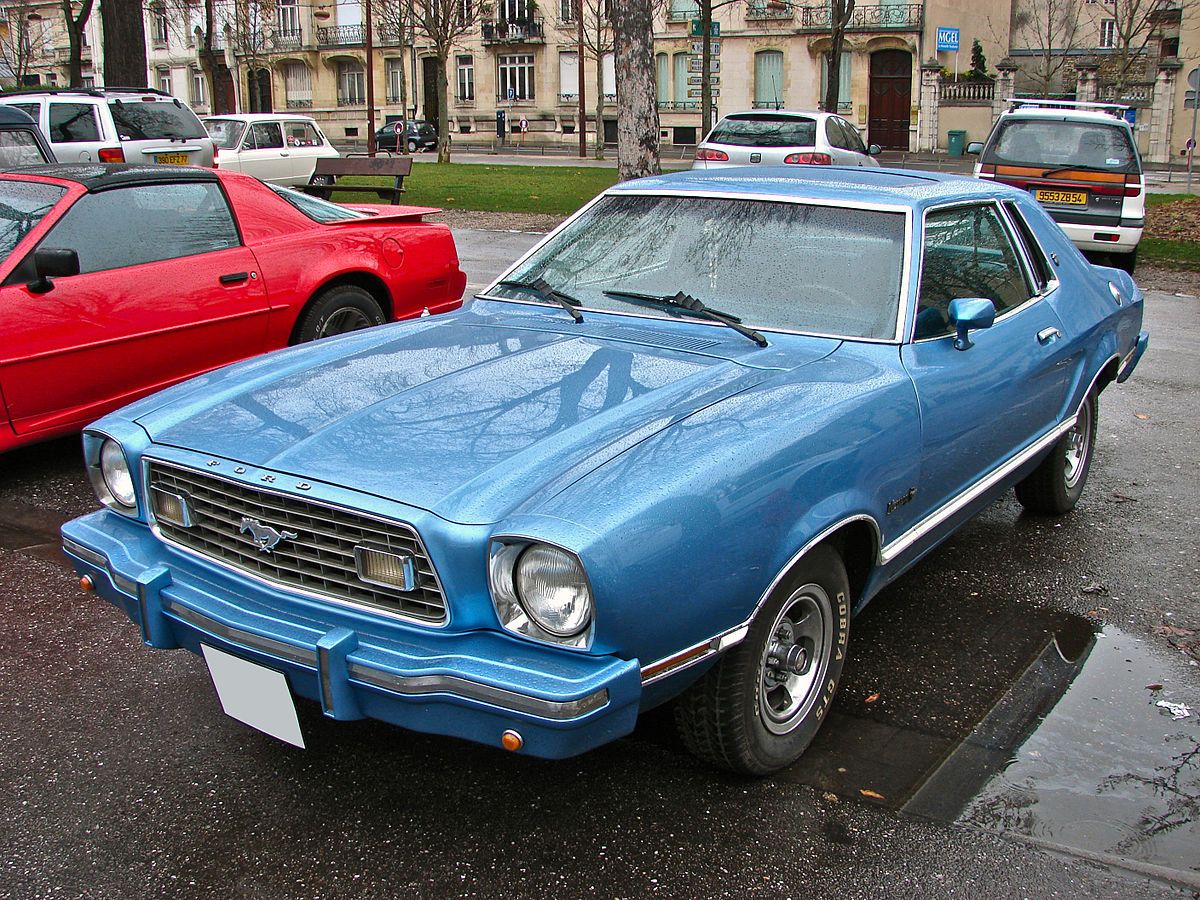
1. **Ford Mustang II**Ah, the Ford Mustang II. For many Baby Boomers, this particular iteration holds a peculiar soft spot, often championed as a valiant, if somewhat misguided, effort to keep the revered Mustang lineage thrumming along during the rather bleak fuel crisis era. It was Ford’s pragmatic answer to a changing market, a smaller, ostensibly more economical take on an icon that had, perhaps, grown a little too large for its britches.
Boomers might recall its introduction with a sense of necessity, seeing it as a practical, albeit undeniably less powerful, continuation of a beloved nameplate, a car that offered a different kind of appeal for a different, more constrained, time. It was the Mustang that adapted, a symbol of resilience, or perhaps compromise, in the face of economic uncertainty.
However, try to pitch the romantic notion of a Mustang II to a Millennial, and you’ll likely be met with a blank stare, if not outright, visceral derision. They, with their penchant for authenticity and a healthy dose of cynicism for anything that smells of corporate dilution, criticize it relentlessly for straying too far from its illustrious, muscle-bound roots. They see it as an impostor, a shadow, rather than a genuine evolution.
From a contemporary perspective, particularly through the lens of a generation that values genuine substance over diluted heritage, it’s hard to argue against their points. The Mustang II felt like a concession, a lukewarm tea in place of a robust espresso, a clear shadow of its former self, trading undeniable muscle for fleeting fuel efficiency in a way that just didn’t translate into enduring charisma or collectability.
Car Model Information: 2018 Honda Civic EX
Name: Second generation
Caption: Ford Mustang II coupe
Aka: Ford Mustang II , Ford T5 (in Germany)
Class: Pony car,Subcompact car
Production: 1973–1978
ModelYears: 1974–1978
Predecessor: Ford Mustang (first generation)
Successor: Ford Mustang (third generation)
Assembly: Unbulleted list
Layout: Front-engine, rear-wheel-drive layout
BodyStyle: coupé,hatchback
Related: Ford Pinto,Ford Pinto
Manufacturer: Ford Motor Company
Engine: ubl
Transmission: ubl
Wheelbase: cvt
Length: cvt
Width: cvt
Height: cvt
Designer: Buck Mook, Dick Nesbitt
Categories: All articles with dead external links, All articles with unsourced statements, Articles with dead external links from April 2024, Articles with permanently dead external links, Articles with short description
Summary: The second-generation Ford Mustang, marketed as the Ford Mustang II, is a two- or three-door, four-passenger, front-engine/rear-drive pony car manufactured and marketed by Ford from 1973 until 1978. Introduced in September 1973 for the 1974 model year, the Mustang II arrived roughly coincident with the oil embargo of 1973 and subsequent fuel shortages. Developed under Lee Iacocca, it was an “entirely new kind of pony car.” Ford “decided to call it Mustang II, since it was a new type of pony car designed for an era of high gas prices and fuel shortages.”
The Mustang II was 490 lb (222 kg) lighter and almost 19 in (483 mm) shorter than the 1973 Mustang, and derived from the subcompact Pinto platform. While sharing a limited number of driveline components with the Pinto, the Mustang II employed an exclusive subframe, isolating its front suspension and engine mount subframe. The steering used a rack-and-pinion design.
Named Motor Trend’s 1974 Car of the Year and reaching over 1.1 million sales over four years of production, the Mustang II is noted simultaneously for both its marketing prescience and strong sales – while criticized as having abandoned essential aspects of the Mustang heritage and described, in a retrospective after 40 years since its introduction, as embodying the Malaise era.
Get more information about: Ford Mustang (second generation)
Buying a high-performing used car >>>
Brand: Ford Model: Mustang II
Price: $19,974 Mileage: 64,299 mi.
Read more about: Boomer Dream Machines: 14 Classic Car Icons Millennials Are Overlooking and Why They’re Missing the Mark
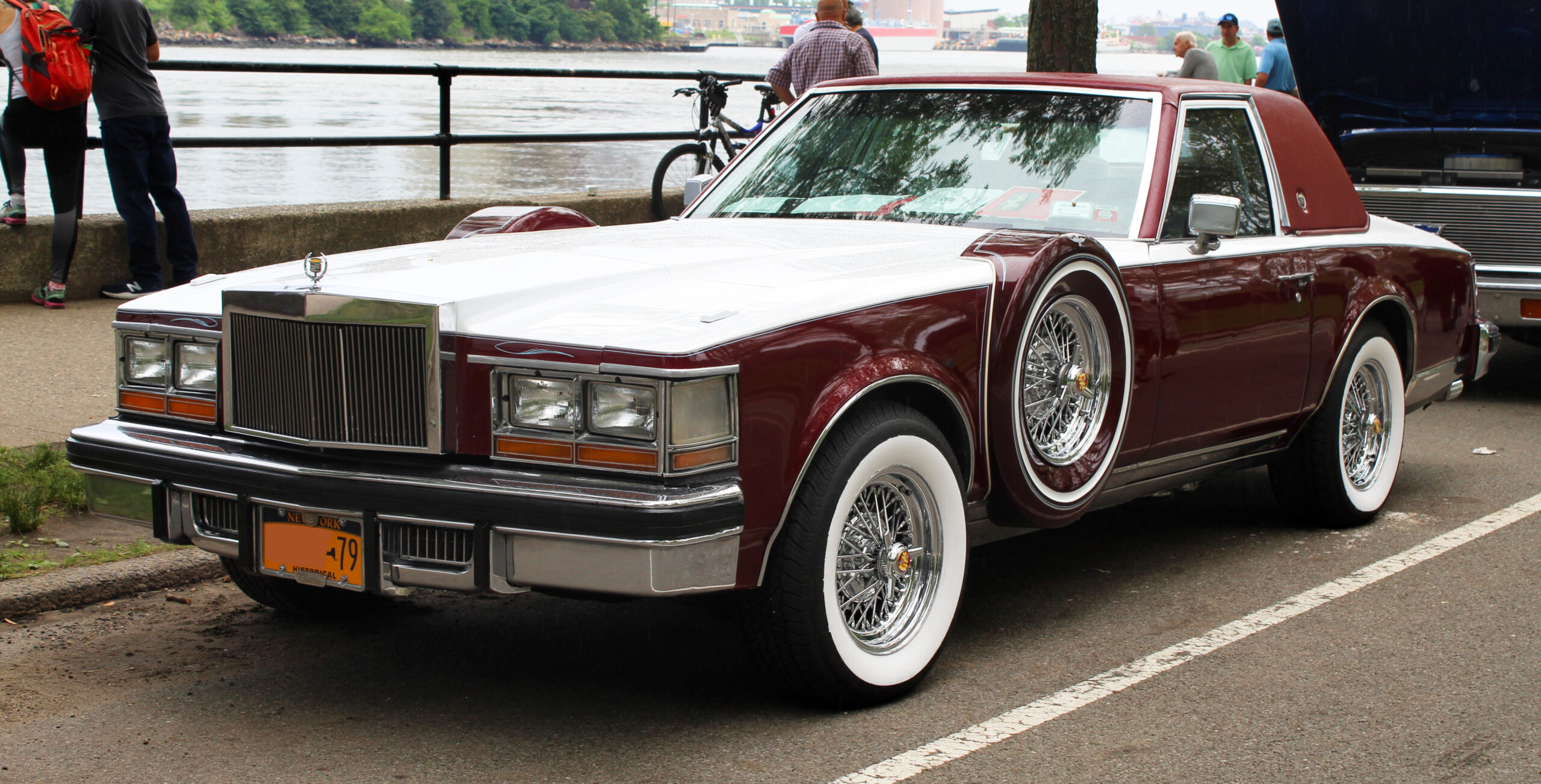
2. **Cadillac Seville**The Cadillac Seville, for a significant cohort of Baby Boomers, was the very embodiment of premium American luxury and undeniable sophistication during its zenith. They recall it as a flagship sedan that offered unparalleled comfort, a distinctive, stately style, and an unequivocal statement of status, a true symbol of having “made it.”
It was the comfortable cruiser of choice, perfectly suited for long, uninterrupted drives, a testament to American automotive prowess that deftly blended opulence with a certain sense of understated power. It embodied the aspirational dream of a well-earned, opulent ride. Its presence on the road, with its often commanding dimensions, was designed to command respect, reflecting an era where bigger often, and unapologetically, meant better.
But parade a Seville before a discerning Millennial today, and they’ll likely recoil, perhaps even audibly, at its perceived excesses. They tend to view the Seville as utterly emblematic of the past, often wasteful, American automotive design philosophy, characterized by its undeniably large, almost land-yacht-like body and its notoriously poor fuel inefficiency.
For a generation acutely aware of ecological and ecosystem impact, and often saddled with debt, this car is a stark relic of an era of conspicuous consumption that clashes dramatically with their ingrained values of practicality, environmental consciousness, and sharp economic sensibility. The sheer physical size and its prodigious thirst for gasoline simply don’t compute in a world striving for leaner, greener, and ultimately more responsible transportation solutions.
Car Model Information: 1999 Cadillac Seville Base
Name: Cadillac Seville
Caption: 1998–2004 Cadillac Seville
Manufacturer: Cadillac
Production: 1975–2003
ModelYears: 1976–2004
Class: luxury car
Layout: FR layout
Predecessor: Cadillac Calais
Successor: Cadillac STS
Categories: 1980s cars, 1990s cars, All articles with unsourced statements, Articles with short description, Articles with unsourced statements from October 2016
Summary: The Cadillac Seville is a mid-size luxury car manufactured by Cadillac from the 1976 to 2004 model years as a smaller-sized, premium model. It was replaced by the STS in 2004 for the 2005 model year.
Get more information about: Cadillac Seville
Buying a high-performing used car >>>
Brand: Cadillac Model: Seville
Price: $19,900 Mileage: 36,875 mi.
Read more about: Unpacking the Generational Divide: 14 Classic Boomer Cars Millennials Just Aren’t Craving – And Why
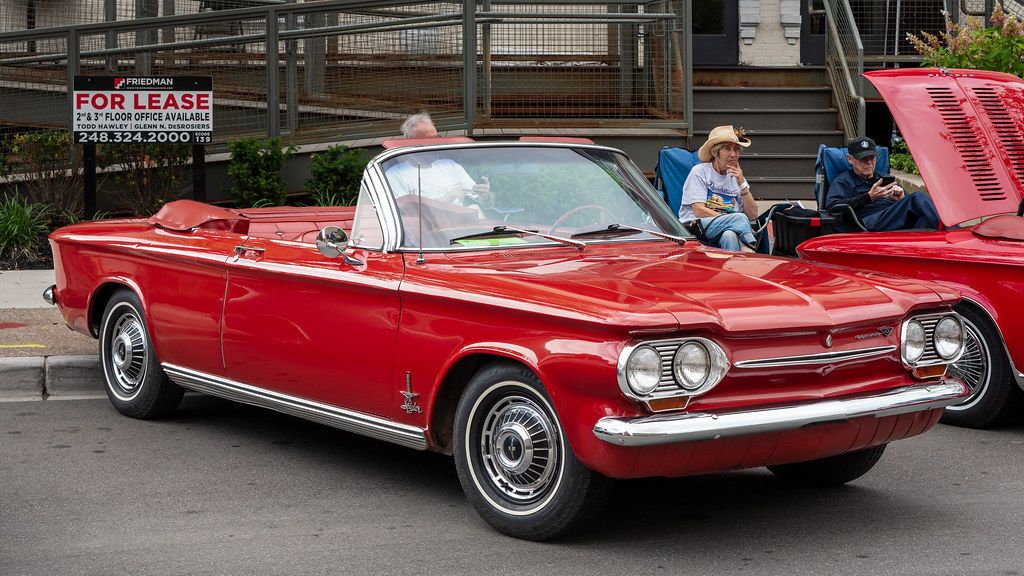
3. **Chevrolet Corvair**The Chevrolet Corvair is, without a doubt, a fascinating, albeit fraught, case study in automotive history, and for Baby Boomers, it was a car that genuinely captivated with its then-innovative design and its unconventional, rear-mounted air-cooled engine. It represented an audacious, almost revolutionary, departure for an American automaker, daring to challenge the deeply ingrained conventional front-engine, rear-wheel-drive norms that dominated the domestic market.
Boomers might fondly remember its distinctive, almost European, profile and the genuine excitement, bordering on awe, that surrounded its bold engineering choices, seeing it as a true marvel of its time that promised a thrilling new direction for Chevrolet.
However, the Corvair’s legacy, as any true gearhead or history buff knows, is irrevocably stained by controversy, and Millennials, with their easily accessible digital archives of information, are acutely aware of it. They often, and quite justifiably, criticize it for its inherent handling issues and the extremely serious safety concerns that were brought to light, most notably by Ralph Nader’s groundbreaking, albeit controversial, book “Unsafe at Any Speed.”
This well-publicized historical baggage, and the shadow of the legal battles that followed, makes it significantly less desirable among younger enthusiasts, who, with good reason, prioritize demonstrably proven safety and reliable handling above all else. For them, the innovative spirit is not merely overshadowed but actively eclipsed by the very real dangers associated with its design flaws, particularly in its earlier, swing-axle iterations.
Car Model Information: 1964 Chevrolet Corvair Monza
Caption: 1964 Chevrolet Corvair Monza
Name: Chevrolet Corvair
Manufacturer: Chevrolet
Production: 1960–1969
Platform: GM Z platform
Chassis: Unibody
ModelYears: 1960–1969
Assembly: United States,Kansas City, Missouri,Oakland, California,Van Nuys,St. Louis,Flint, Michigan,Belgium,Canada,Mexico,South Africa,Switzerland,Venezuela
Class: Compact car
Successor: Chevrolet Vega
Layout: Rear-engine, rear-wheel-drive layout
Categories: All Wikipedia articles written in American English, All articles lacking in-text citations, All articles needing additional references, All articles with dead external links, All articles with specifically marked weasel-worded phrases
Summary: The Chevrolet Corvair is a rear-engined, air-cooled compact car manufactured and marketed by Chevrolet over two generations between 1960 and 1969. The Corvair was a response to the increasing popularity of small, fuel-efficient automobiles, particularly the imported Volkswagen Beetle and the success of American-built compacts like the Rambler American and Studebaker Lark.
The first generation (1960–1964) was offered as a four-door sedan, two-door coupe, convertible, and four-door station wagon. A two- and four-door hardtop and a convertible were available second generation (1965–1969) variants. The Corvair platform was also offered as a subseries known as the Corvair 95 (1961–1965), which consisted of a passenger van, commercial van, and pickup truck variant. Total production was approximately 1.8 million vehicles from 1960 until 1969.
The name “Corvair” was first applied in 1954 to a Corvette-based concept with a hardtop fastback-styled roof, part of the Motorama traveling exhibition. When applied to the production models, the “air” part referenced the engine’s cooling system.
A prominent aspect of the Corvair’s legacy derives from controversy surrounding its handling, articulated aggressively by Ralph Nader’s Unsafe at Any Speed and tempered by a 1972 Texas A&M University safety commission report for the National Highway Traffic Safety Administration (NHTSA) which found that the 1960–1963 Corvair possessed no greater potential for loss of control in extreme situations than contemporary compacts.
To better counter popular inexpensive subcompact competitors, notably the Beetle and Japanese imports such as the Datsun 510, GM replaced the Corvair with the more conventional Chevrolet Vega in 1970.
Get more information about: Chevrolet Corvair
Buying a high-performing used car >>>
Brand: Chevrolet Model: Corvair
Price: $29,988 Mileage: 74,787 mi.
Read more about: Unpacking the Generational Divide: 14 Classic Boomer Cars Millennials Just Aren’t Craving – And Why
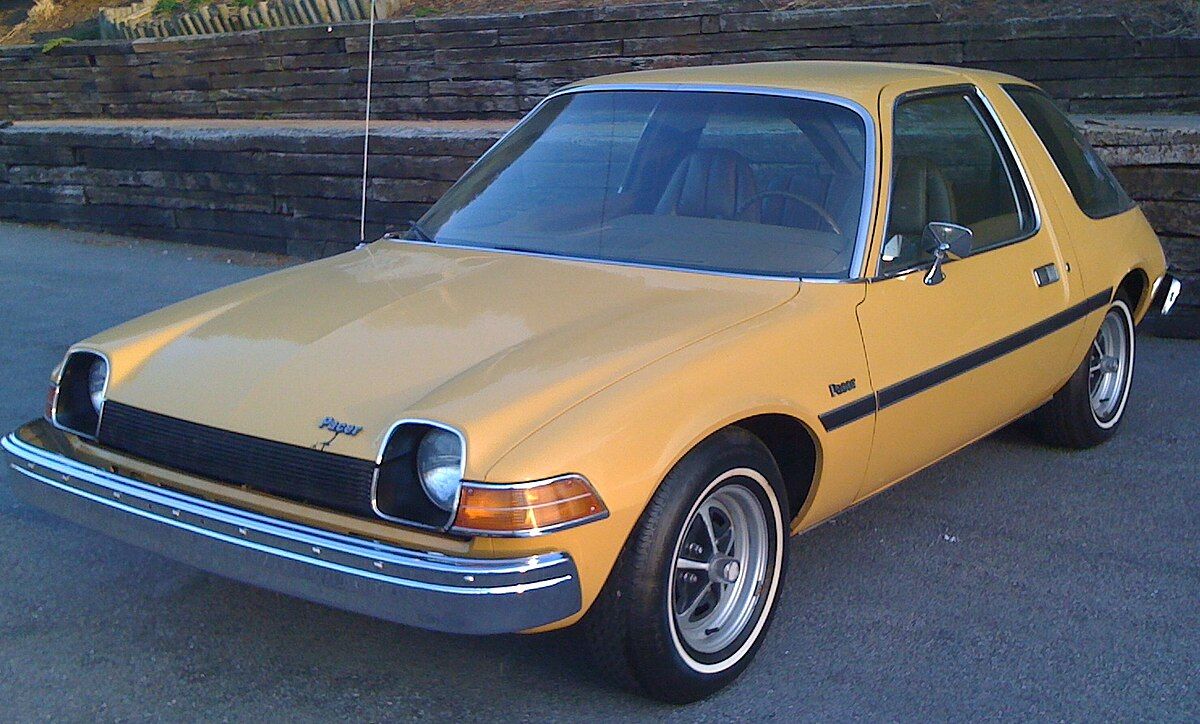
4. **AMC Pacer**Oh, the AMC Pacer. Now, this one’s a true conversation starter, or perhaps, a genuine head-scratcher. For some adventurous Boomers, this car was once lauded, even celebrated, as a beacon of innovation, a genuinely unique styling exercise that fearlessly attempted to break every mold in the book. Its strikingly wide stance, the expansive, almost panoramic, glass area that gave it its famous “fishbowl” aesthetic, were undeniably radical design elements.
These were specifically engineered to offer an airy, incredibly spacious interior and exceptional visibility, all within a surprisingly compact, city-friendly package. It was an audacious, future-forward design statement, a truly bold declaration in an otherwise conservative, often derivative, automotive landscape, and its daring, unconventional approach genuinely appealed to those looking for something truly, unapologetically different.
Fast forward to today, and most Millennials, with their keen eye for contemporary aesthetics and a perhaps less forgiving view of historical oddities, tend to regard the Pacer as, well, simply plain *weird*. They openly, and sometimes mercilessly, make fun of its undeniably bubble-like appearance, criticizing it pointedly for being both aesthetically challenged and, perhaps more damningly, demonstrably inefficient.
What was once heralded as groundbreakingly innovative is now, almost universally, viewed as a monumental misstep, a design that failed spectacularly rather than succeeded bravely. The Pacer, through the unforgiving lens of time and changing tastes, has become something of a cultural punchline, its distinctive, often perplexing, shape more a source of amusement and bewilderment than genuine admiration.
Read more about: Unpacking the Generational Divide: 14 Classic Boomer Cars Millennials Just Aren’t Craving – And Why
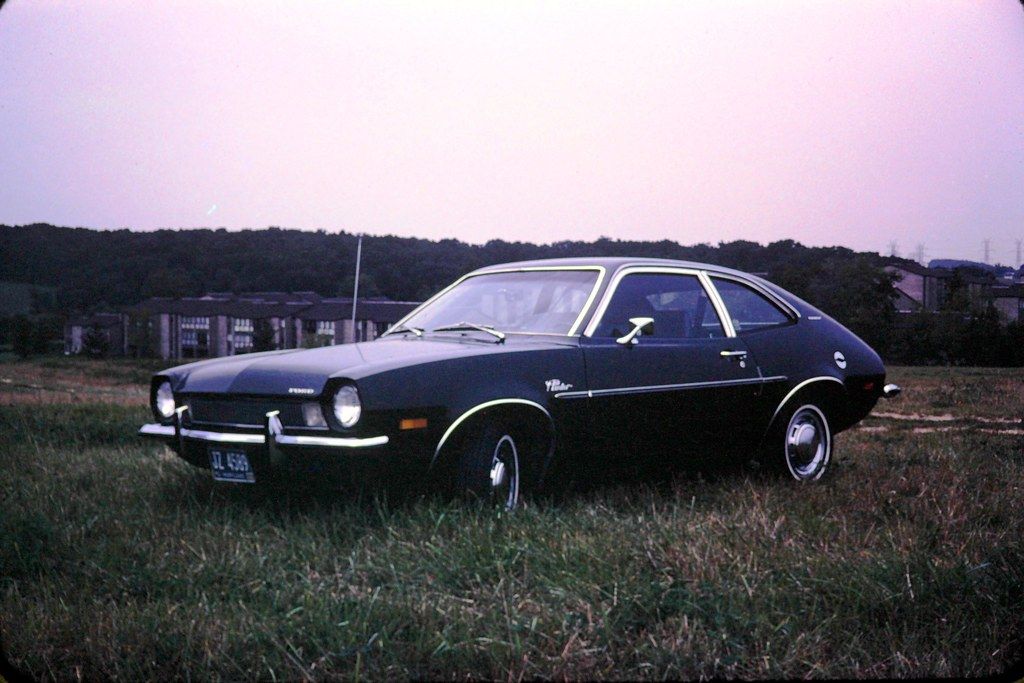
5. **Ford Pinto**The Ford Pinto: a name that, for anyone remotely familiar with automotive history, doesn’t exactly conjure images of roaring success or beloved classics. This is a car that, despite its initial, quite considerable popularity during the 1970s as an affordable compact, has become eternally notorious for reasons no automaker, or indeed, any sane human being, wants associated with their product.
Boomers might, with a certain wistful nostalgia, reminisce about its sheer affordability and its everyday practicality, recalling it as a ubiquitous, economical choice that served countless families diligently during their formative years. It was a simple, no-frills car, purpose-built and unpretentious, offering accessible, budget-friendly transportation in a time of surging gas prices and significant economic shifts.
However, for Millennials, the Pinto isn’t remembered for its affordability; it’s etched into the collective consciousness for its catastrophic, deeply disturbing safety issues. Specifically, the terrifying, well-documented risk of its rear-mounted fuel tank rupturing and catching fire upon rear impact has cemented its place in automotive infamy as a symbol of corporate negligence and questionable ethical decisions.
This infamous, well-publicized design flaw makes the Pinto, in the discerning eyes of younger generations, not just dangerous, but morally compromised. The dark shadow of its safety record looms uncomfortably large, overwhelmingly outweighing any fleeting nostalgic appeal it might hold for those who grew up with it.
Car Model Information: 1978 Ford Pinto RUNABOUT HATCHBACK
Name: Ford Pinto
Caption: Ford Pinto
Manufacturer: Ford Motor Company
Aka: Mercury Bobcat
Production: September 1970 – July 1980
ModelYears: 1971–1980 (Pinto),1974–1980 (Bobcat)
Assembly: Edison, New Jersey,Milpitas, California
Designer: Robert Eidschun (1968)
Class: Subcompact car
BodyStyle: Sedan (automobile),sedan delivery,station wagon,hatchback
Related: #Mercury Bobcat (1974–1980),Ford Mustang (second generation)
Layout: Front-engine, rear-wheel-drive layout
Chassis: Unibody
Engine: unbulleted list
Abbr: on
Disp: Ford Cologne engine
Transmission: unbulleted list
Wheelbase: 94.0 in
Length: 163 in
Width: 69.4 in
Height: 50 in
Weight: convert
Predecessor: Ford Cortina#Mark II (1966–1970)
Successor: Ford Escort (North America)
Categories: 1980s cars, Articles with short description, Cars discontinued in 1980, Cars introduced in 1970, Commons category link from Wikidata
Summary: The Ford Pinto is a subcompact car that was manufactured and marketed by Ford Motor Company in North America from 1970 until 1980. The Pinto was the first subcompact vehicle produced by Ford in North America.
The Pinto was marketed in three body styles throughout its production: a two-door fastback sedan with a trunk, a three-door hatchback, and a two-door station wagon. Mercury offered rebadged versions of the Pinto as the Mercury Bobcat from 1975 until 1980 (1974–1980 in Canada). Over three million Pintos were produced over its ten-year production run, outproducing the combined totals of its domestic rivals, the Chevrolet Vega and the AMC Gremlin. The Pinto and Mercury Bobcat were produced at Edison Assembly in Edison, New Jersey, St. Thomas Assembly in Southwold, Ontario, and San Jose Assembly in Milpitas, California.
Since the 1970s, the safety reputation of the Pinto has generated controversy. Its fuel-tank design attracted both media and government scrutiny after several deadly fires occurred when the tanks ruptured in rear-end collisions. A subsequent analysis of the overall safety of the Pinto suggested it was comparable to other 1970s subcompact cars. The safety issues surrounding the Pinto and the subsequent response by Ford have been cited widely as business ethics and tort reform case studies.
Get more information about: Ford Pinto
Buying a high-performing used car >>>
Brand: Ford Model: Pinto
Price: $19,000 Mileage: 91,000 mi.
Read more about: Unpacking the Generational Divide: 14 Classic Boomer Cars Millennials Just Aren’t Craving – And Why
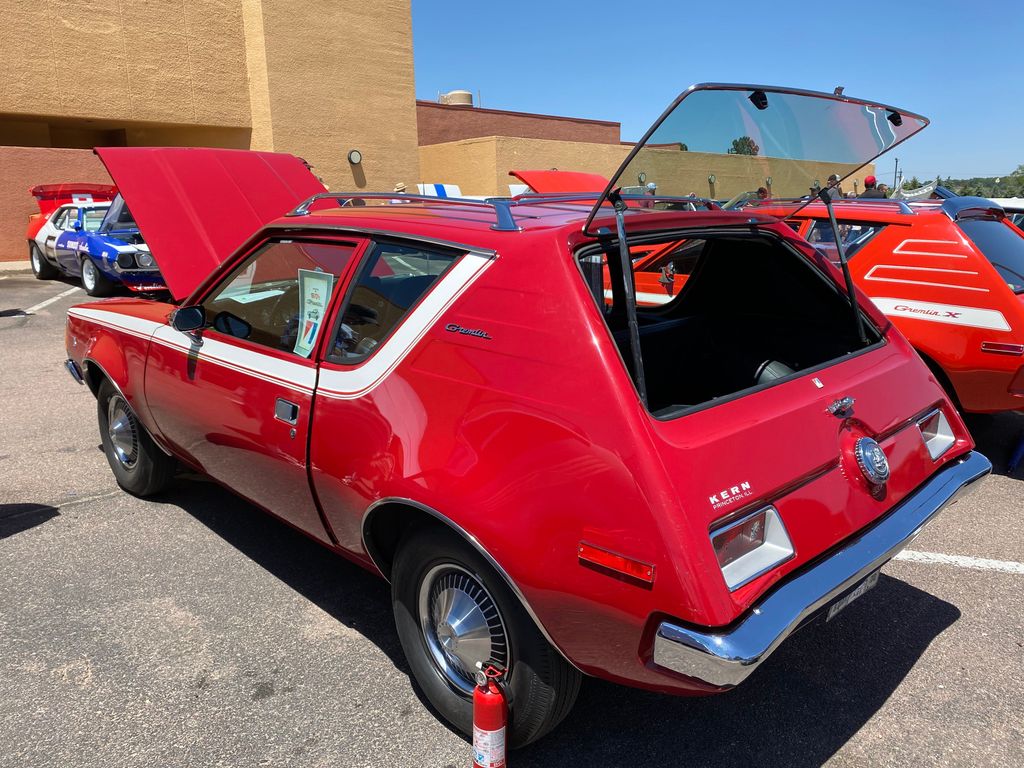
6. **AMC Gremlin**Following in the, shall we say, *quirky* footsteps of its AMC brethren, the Gremlin, with its distinctive, undeniably unique truncated design, manages to evoke a certain peculiar nostalgia for some Baby Boomers. They might recall its aggressively “chopped” rear end and its status as an early American subcompact, a car that certainly, for better or worse, stood out vividly from the monotonous crowd of sedans.
It was an audacious, almost defiant, design choice, a clear attempt to offer a compact car with a personality that screamed “different,” and for some, that very unconventionality, that deliberate departure from the norm, was undeniably part of its idiosyncratic charm.
Millennials, however, are far less forgiving, and significantly more aesthetically discerning, when it comes to the Gremlin’s rather divisive appearance. They tend to universally dislike its unusual, almost jarring, aesthetics, often finding it downright ugly, awkward, and disproportionate. Beyond its polarizing looks, the Gremlin is also frequently, and justifiably, criticized for its less-than-stellar performance metrics.
It was never a powerhouse of speed, nor was it particularly known for its refined handling or comfortable ride, cementing its image as a rather unappealing, almost masochistic, choice for anyone genuinely seeking a modern, engaging driving experience. It’s a car that, quite simply, does not deliver on any front.
Read more about: Unpacking the Generational Divide: 14 Classic Boomer Cars Millennials Just Aren’t Craving – And Why
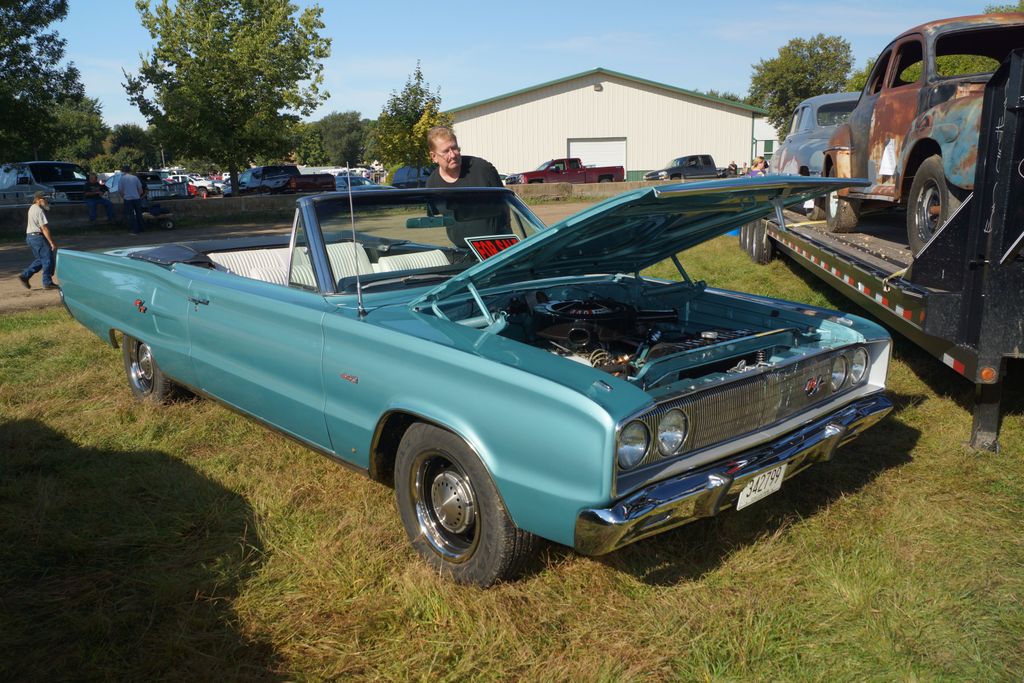
7. **Dodge Coronet**The Dodge Coronet, particularly during its prime years, was widely perceived by many Baby Boomers as the quintessential solid, utterly reliable family car. It was the absolute definition of a workhorse, a dependable sedan or wagon that effortlessly ferried families, dutifully ran countless errands, and generally got the job done without much fanfare or fuss.
Boomers genuinely appreciated its straightforward, honest engineering, its ample roominess, and the sheer, unpretentious practicality it offered, embodying the no-nonsense utility that was so highly valued in an era of rapidly growing suburban families and burgeoning middle-class aspirations. It was, in essence, a sturdy, honest, and utterly functional machine, a reliable cog in the everyday American family life.
Millennials, on the other hand, often dismiss the Coronet with a casual shrug for what they perceive as its decidedly plain, almost anonymous, design and its considerable, often unwieldy, size. In their eyes, it appears glaringly out of step with contemporary automotive values, which, as we know, increasingly prioritize sleek, dynamic aesthetics, compact, city-friendly footprints, and razor-sharp efficiency.
The Coronet’s utilitarian, often boxy lines, and its substantial, often imposing, dimensions, are a far cry from the agile, aesthetically pleasing vehicles that appeal to today’s drivers, especially those who spend their days navigating increasingly crowded urban environments where parking is a contact sport. Crucially, it lacks the undeniable flash and raw power of a muscle car, and it certainly doesn’t possess the refined elegance of a luxury cruiser, leaving it in a kind of automotive no-man’s-land for younger generations.
Car Model Information: 1967 Dodge Coronet Restomod
Name: Dodge Coronet
Caption: 1967 Dodge Coronet R/T
Manufacturer: Dodge
Production: 1949–1959,1965–1976
Class: Full-size
Predecessor: Dodge Custom
Successor: Dodge Dart
Layout: FR layout
Categories: 1950s cars, 1970s cars, All articles with dead external links, All articles with unsourced statements, Articles with dead external links from June 2016
Summary: The Dodge Coronet is an automobile that was marketed by Dodge in seven generations, and shared nameplates with the same bodyshell with varying levels of equipment installed. Introduced as a full-size car in 1949, it was the division’s highest trim line and moved to the lowest level starting in 1955 through 1959. The name was reintroduced on intermediate-sized models from the 1965 until 1976 model years. Muscle car versions were available starting in 1965 with the 383 and 426 wedge cu in (7.0 L) Chrysler RB engine, followed in 1966 by the powerful 426 cu in (7.0 L) Chrysler Hemi. Other performance models included the “Superbee”, and featured, the 383 cu in (6.3 L) Magnum, among other engine options. The nameplate “coronet” is a type of crown worn by royalty.
In the 1980s, the Coronet was used on Dodge models marketed in Colombia.
Get more information about: Dodge Coronet
Buying a high-performing used car >>>
Brand: Dodge Model: Coronet
Price: $46,500 Mileage: 2,818 mi.
Read more about: Boomer Dream Machines: 14 Classic Car Icons Millennials Are Overlooking and Why They’re Missing the Mark

8. **Cadillac Eldorado**The Cadillac Eldorado, for many Baby Boomers, was a genuine land yacht of status, a gleaming testament to opulence and unparalleled comfort. It wasn’t just transportation; it was a mobile throne, a symbol of having truly arrived. Its sprawling dimensions, plush interiors, and sheer audacious presence spoke volumes about an American dream, where more was gloriously more.
Driving an Eldorado meant gliding down the highway in a cocoon of luxury, insulated from worldly cares. It embodied a grand touring philosophy, a majestic chariot for cross-country journeys or making a statement. This vehicle, when it pulled up, commanded attention and respect.
However, Millennials view this behemoth as an ecological nightmare. Its excessive size and poor fuel efficiency clash with their ingrained values of environmental consciousness and practicality. It’s seen as a stark relic, impractical for today’s urban landscapes.
Car Model Information: 1984 Cadillac Eldorado
Caption: 1963 Cadillac Eldorado Convertible
Name: Cadillac Eldorado
Manufacturer: Cadillac
Production: 1952–2002
Layout: Front-engine, rear-wheel-drive layout
Aka: Cadillac Fleetwood Eldorado
Class: Personal luxury car
Successor: Cadillac CTS
Categories: 1960s cars, 1970s cars, 1980s cars, 1990s cars, 2000s cars
Summary: The Cadillac Eldorado is a luxury car manufactured and marketed by the Cadillac Motor Car Division of General Motors from 1952 until 2002, over twelve generations.
The Eldorado was at or near the top of the Cadillac product line. The original 1953 Eldorado convertible and the Eldorado Brougham models of 1957–1960 had distinct bodyshells and were the most expensive models offered by Cadillac during those years. The Eldorado was never less than second in price after the Cadillac Series 75 limousine until 1966. Beginning in 1967, the Eldorado retained its premium position in the Cadillac price structure, but was manufactured in high volumes on a unique, two-door personal luxury car platform.
The Eldorado carried the Fleetwood designation from 1965 through 1972, and was seen as a modern revival of the pre-war Cadillac V-12 and Cadillac V-16 roadsters and convertibles.
Get more information about: Cadillac Eldorado
Buying a high-performing used car >>>
Brand: Cadillac Model: Eldorado
Price: $13,990 Mileage: 50,720 mi.
Read more about: Boomer Dream Machines: 14 Classic Car Icons Millennials Are Overlooking and Why They’re Missing the Mark

9. **Lincoln Continental with Suicide Doors**The Lincoln Continental, especially those with iconic “suicide doors,” was a rolling piece of art for many Baby Boomers. It symbolized ultimate luxury, evoking images of presidents and Hollywood stars. The sheer elegance of those doors, opening wide, spoke of bygone sophistication, holding a special place in their hearts.
It represented a pinnacle of American automotive design, promising an unrivaled experience with its smooth ride and expansive interior. This car didn’t just move; it made a memorable entrance, symbolizing an age of prestige. It was a statement transcending mere transportation.
Yet, Millennials greet this grand vehicle with bemusement. Its sheer size is cumbersome, and those dramatic doors are seen as a potential liability. Its inherent inefficiency makes it a hard sell for younger generations prioritizing agility, maneuverability, and responsible resource consumption.
Car Model Information: 2018 Lincoln Continental Reserve
Name: Lincoln Continental
Caption: 2019 Lincoln Continental
Manufacturer: Lincoln Motor Company
Production: 1939–1942,1946–1948,1956–2002,2016–2020
ModelYears: 1940–1942,1946–1948,1958–1980,1982–2002,2017–2020
Class: Full-size car,luxury car
Layout: Longitudinal engine,Front-engine, rear-wheel-drive layout
Categories: 1930s cars, 1940s cars, 1950s cars, 1960s cars, 1970s cars
Summary: The Lincoln Continental is a series of mid-sized and full-sized luxury cars produced between 1939 and 2020 by Lincoln, a division of the American automaker Ford. The model line was introduced following the construction of a personal vehicle for Edsel Ford, who commissioned a coachbuilt 1939 Lincoln-Zephyr convertible, developed as a vacation vehicle to attract potential Lincoln buyers. In what would give the model line its name, the exterior was designed with European “continental” styling elements, including a rear-mounted spare tire.
In production for over 55 years across nine different decades, Lincoln has produced ten generations of the Continental. Within the Lincoln model line, the Continental has served several roles ranging from its flagship to its base-trim sedan. From 1961 to 1976, Lincoln sold the Continental as its exclusive model line. The model line has also gone on hiatus three times. From 1949 to 1955, the nameplate was briefly retired. In 1981, the Continental was renamed the Lincoln Town Car to accommodate the 1982 seventh-generation Continental. After 2002, the Continental was retired, largely replaced by the Lincoln MKS in 2009; in 2017, the tenth-generation Continental replaced the MKS.
As part of its entry into full-scale production, the first-generation Continental was the progenitor of an entirely new automotive segment, the personal luxury car. Following World War II, the segment evolved into coupes and convertibles larger than sports cars and grand touring cars with an emphasis on features, styling, and comfort over performance and handling. From 1956 to 1957, the Continental nameplate was the namesake of the short-lived Continental Division, marketing the 1956–1957 Continental Mark II as the worldwide flagship of Ford Motor Company; as a second successor, Ford introduced the Continental Mark series in 1969, produced over six generations to 1998.
Along with the creation of the personal luxury car segment, the Lincoln Continental marked the zenith of several designs in American automotive history. The Continental is the final American vehicle line with a factory-produced V12 engine (1948), the final four-door convertible (1967), and the final model line to undergo downsizing (for the 1980 model year).
American production of the Continental and MKZ, its only two sedans, ended in 2020 thereby making Lincoln a crossover/SUV-only brand in the US.
Get more information about: Lincoln Continental
Buying a high-performing used car >>>
Brand: Lincoln Model: Continental
Price: $22,523 Mileage: 86,549 mi.
Read more about: Why Millennials Are Swerving Away: Unpacking the Rejection of 12 Classic Boomer Cars
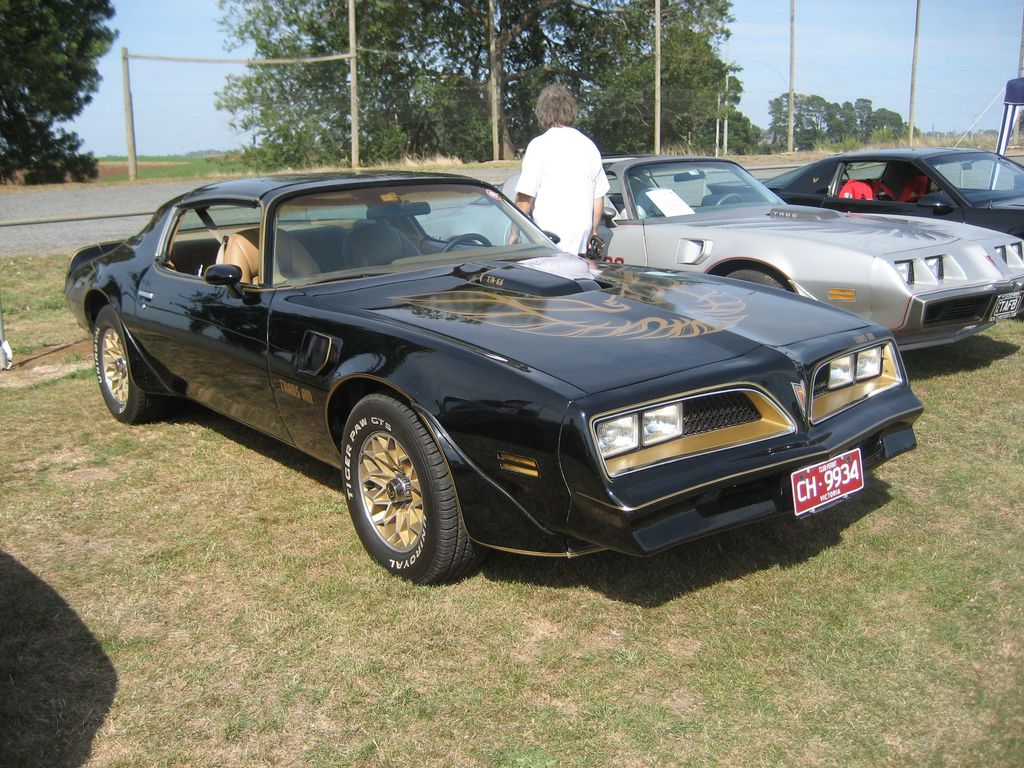
10. **Pontiac Trans Am**The Pontiac Trans Am ignites a fire in any true Baby Boomer. Celebrated in films and TV of the ’70s and ’80s, it was a cinematic legend, symbolizing raw American muscle and undeniable swagger. Think Burt Reynolds and a screaming chicken – the epitome of cool and an icon of performance.
For Boomers, the Trans Am represented thrilling freedom, a rebellious spirit on four wheels. It was the dream car, promising adventure and making every drive exhilarating. Its aggressive lines, powerful engine, and unmistakable road presence cemented its status as a cultural touchstone.
Millennials, however, are often less impressed. They overlook it, perceiving a lack of sophistication and refinement compared to today’s sleek sports cars. Its raw power and brash aesthetics are seen as crude, making it an artifact too loud and unrefined for contemporary tastes.
Car Model Information: 2018 Honda Civic EX
Name: Pontiac Firebird
Caption: The second, third, and fourth generations of,the Pontiac Firebird Trans Am
Manufacturer: Pontiac (automobile)
Production: February 23, 1967 – August 30, 2002
ModelYears: 1967 – 2002
Class: Pony car,Muscle car
Platform: GM F platform
Related: Chevrolet Camaro
Layout: Front engine, rear-wheel-drive layout
Categories: 1970s cars, 1980s cars, 1990s cars, 2000s cars, All articles with dead external links
Summary: The Pontiac Firebird is an American automobile built and produced by Pontiac from the 1967 to 2002 model years. Designed as a pony car to compete with the Ford Mustang, it was introduced on February 23, 1967, five months after GM’s Chevrolet division’s platform-sharing Camaro. This also coincided with the release of the 1967 Mercury Cougar, Ford’s upscale, platform-sharing version of the Mustang.
The name “Firebird” was also previously used by GM for the General Motors Firebird series of concept cars in the 1950s.
Get more information about: Pontiac Firebird
Buying a high-performing used car >>>
Brand: Pontiac Model: Trans Am
Price: $19,974 Mileage: 64,299 mi.
Read more about: Boomer Dream Machines: 14 Classic Car Icons Millennials Are Overlooking and Why They’re Missing the Mark
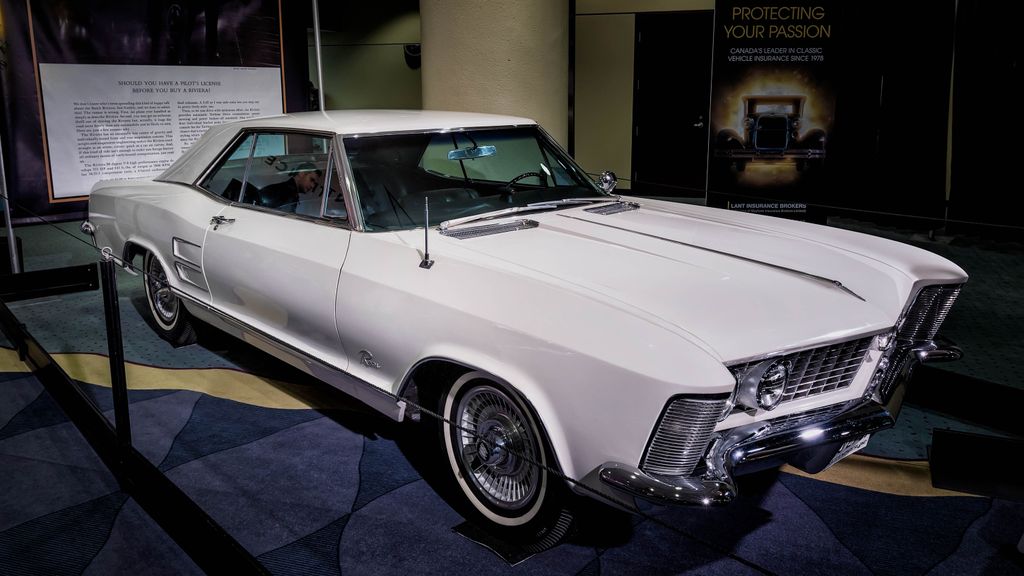
11. **Buick Riviera**The Buick Riviera, particularly with its “boat-tail” rear window, was a masterclass in daring design for its time. Boomers admired its audacious styling and smooth, luxurious ride, a testament to Buick’s willingness to push aesthetic boundaries. It truly stood apart.
It blended sporty coupe lines with Buick’s expected comfort and sophistication. The Riviera appealed to those wanting something unique and stylish without sacrificing ride quality, exuding quiet confidence and sculptural beauty. It was a car of genuine character.
For Millennials, however, the Riviera is an “outdated gas-guzzler.” Its distinctive design is “too bold” for their understated aesthetic. Economic realities and environmental consciousness make a large, inefficient vehicle a hard sell, reflecting a philosophy prioritizing styling and comfort over fuel economy.
Car Model Information: 1971 Buick Riviera
Caption: 1963 Buick Riviera
Name: Buick Riviera
Predecessor: Buick Super
Manufacturer: Buick
ModelYears: 1963–1993,1995–1999
Class: Personal luxury car
Categories: 1960s cars, 1970s cars, 1980s cars, 1990s cars, All articles with specifically marked weasel-worded phrases
Summary: The Buick Riviera is a personal luxury car that was marketed by Buick from 1963 to 1999, with the exception of the 1994 model year.
As General Motors’ first entry into the personal luxury car market segment, the Riviera was highly praised by automotive journalists upon its high-profile debut. It was a ground-up design on a new GM E platform debuting for the 1963 model year and was also Buick’s first unique Riviera model.
Unlike its subsequent GM E platform stablemates, the Oldsmobile Toronado and Cadillac Eldorado, the Riviera was initially a front engine/rear-wheel drive platform, switching to front-wheel drive starting with the 1979 model year.
While the early models stayed close to their original form, eight subsequent generations varied substantially in size and styling. A total of 1,127,261 Rivieras were produced.
The Riviera name was resurrected for two concept cars that were displayed at auto shows in 2007 and in 2013.
Get more information about: Buick Riviera
Buying a high-performing used car >>>
Brand: Buick Model: Riviera
Price: $22,499 Mileage: 91,150 mi.
Read more about: Boomer Dream Machines: 14 Classic Car Icons Millennials Are Overlooking and Why They’re Missing the Mark
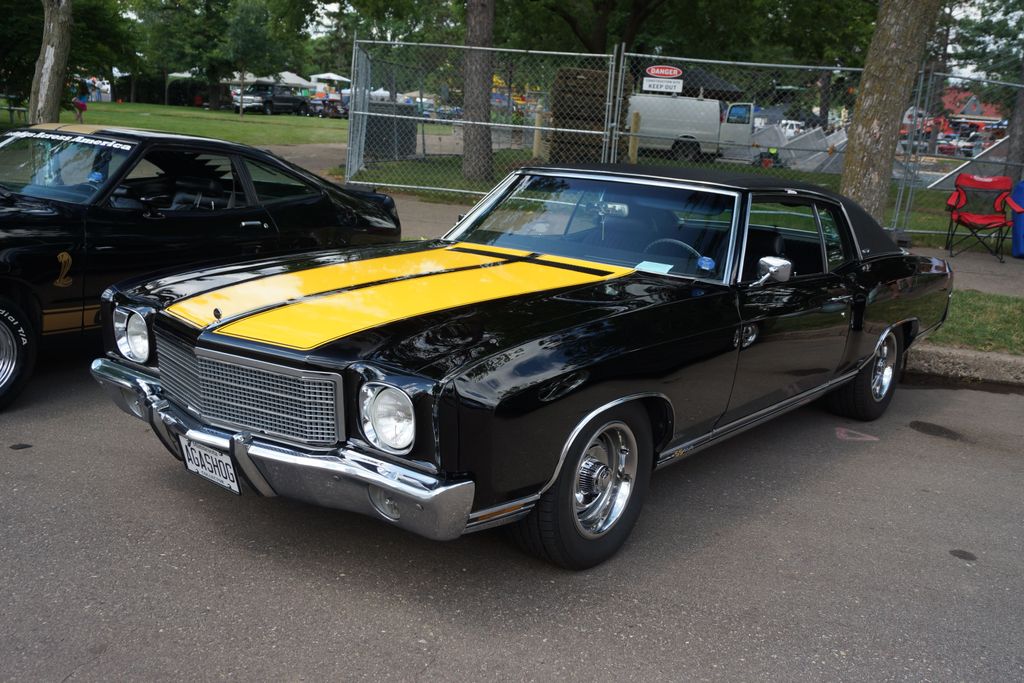
12. **Chevrolet Monte Carlo**For many Baby Boomers, the Chevrolet Monte Carlo carved a niche as a stylish, yet affordable, luxury coupe. It straddled sporty aspirations and comfortable cruising, offering class without breaking the bank. Its distinctive long hood and sleek profile made it a desirable personal statement car.
Its prominence in NASCAR history further cemented its legend for Boomers. Dominating oval tracks added performance credibility and excitement, making it a revered icon. It offered both boulevard comfort and competitive edge, embodying versatile allure.
Millennials, however, struggle to connect. They criticize its bulky size, out of place in modern traffic, and its lackluster handling. Its NASCAR history does little to change perceptions, leaving the Monte Carlo as a historical footnote for a generation accustomed to precise, agile vehicles.
Car Model Information: 2018 Honda Civic EX
Name: Chevrolet Monte Carlo
Manufacturer: Chevrolet
Production: 1969–1987,1994–2007
ModelYears: 1970–1988,1995–2007
Class: Personal luxury car
BodyStyle: coupé
Layout: FR layout
Caption: 2006 Chevrolet Monte Carlo LS
Categories: 1980s cars, 1990s cars, 2000s cars, All Wikipedia articles written in American English, All articles needing additional references
Summary: The Chevrolet Monte Carlo is a two-door coupe that was manufactured and marketed by the Chevrolet division of General Motors. Deriving its name from the city in Monaco, the Monte Carlo was marketed as the first personal luxury car of the Chevrolet brand. Introduced for the 1970 model year, the model line was produced across six generations through the 2007 model year, with a hiatus from 1989 until 1994. The Monte Carlo was a variant of the Pontiac Grand Prix throughout its production.
From 1970 until 1972, the Monte Carlo rode on the unique “A-Special” platform with the Grand Prix, shifting to the standard A-body intermediate chassis from the 1973 through 1977 model years. For 1978, the Monte Carlo line underwent downsizing, but was still considered a midsized coupe. The rear-wheel drive A-body platform of this generation of Monte Carlo was redesignated as the G-body when GM’s front-wheel drive A-body cars were introduced for the 1982 model year. After an abbreviated 1988 model year, the Monte Carlo was replaced by the two-door Chevrolet Lumina.
For the 1995 model year, the Monte Carlo was revived, replacing the two-door Lumina. It shared the front-wheel drive W-platform with the two-door Grand Prix, and was the largest coupe in the Chevrolet lineup. After the 2002 model year, the Grand Prix coupe was discontinued, the Monte Carlo became the largest two-door model produced by an American auto manufacturer.
In response to declining sales of the model line, Chevrolet discontinued the Monte Carlo after the 2007 model year. During much of its production, the Monte Carlo represented the Chevrolet brand in stock car racing. During the 1980s, the Monte Carlo SS was introduced, featuring aerodynamically enhanced styling; as part of its revival, the Monte Carlo again represented Chevrolet in stock car racing from 1995 through its discontinuation.
Get more information about: Chevrolet Monte Carlo
Buying a high-performing used car >>>
Brand: Chevrolet Model: Monte Carlo
Price: $19,974 Mileage: 64,299 mi.
Read more about: Boomer Dream Machines: 14 Classic Car Icons Millennials Are Overlooking and Why They’re Missing the Mark

13. **Mercury Cougar**The Mercury Cougar, a more luxurious sibling to the Ford Mustang, resonated deeply with Baby Boomers. It blended the Mustang’s raw muscle car vibe with elegance and refinement. For many, it offered the best of both worlds: performance and an upscale, distinct appearance, a cut above standard pony cars.
Boomers revered the Cougar for its unique identity, a powerful yet polished car. Its distinctive styling, featuring hidden headlights, contributed to its image as a sophisticated performance machine. It was a testament that a muscle car could also embody refined taste.
Millennials, however, often greet the Cougar with indifference. They view it as an unnecessary deviation from the Mustang’s classic appeal, failing to hit the mark as pure muscle or true luxury. Its subtle distinctions are lost, seeing it as a confused offering, not a definitive classic.
Car Model Information: 1995 Mercury Cougar XR7
Name: Mercury Cougar
Caption: 1969 Mercury Cougar (first generation)
Manufacturer: Mercury (automobile)
Layout: Front-engine, rear-wheel-drive layout
ModelYears: 1967–1997,1999–2002
Class: Pony car,Personal luxury car,Mid-size car,Sport compact
Categories: 1960s cars, 1970s cars, 1980s cars, 1990s cars, 2000s cars
Summary: The Mercury Cougar is a series of automobiles that was sold by Mercury from 1967 to 2002. The model line is a diverse series of vehicles; though the Cougar nameplate is most commonly associated with two-door coupes, at various stages in its production, the model also was offered as a convertible and a hatchback. During its production as the mid-size Mercury line, the Cougar was also offered as a four-door sedan and five-door station wagon.
In production for 34 years across eight generations (skipping the 1998 model year), the Cougar is second only to the Grand Marquis (36 years) in the Mercury line for production longevity. 2,972,784 examples were produced, making it the highest-selling Mercury vehicle. During the 1970s and 1980s, the marketing of the Mercury division was closely associated with the Cougar, with promotional materials advertising Mercury dealers as “The Sign of the Cat” with big cats atop Lincoln-Mercury dealer signs. Cat-related nameplates were adopted by other Mercury lines, including the Bobcat and Lynx.
During its production, the Cougar was assembled at the Dearborn Assembly Plant (part of the Ford River Rouge Complex) in Dearborn, Michigan from 1967 until 1973, San Jose Assembly (Milpitas, California) from 1968 into early 1969, Lorain Assembly (Lorain, Ohio) from 1974 until 1997, and at Flat Rock Assembly (Flat Rock, Michigan) from 1999 through 2002.
Get more information about: Mercury Cougar
Buying a high-performing used car >>>
Brand: Mercury Model: Cougar
Price: $10,995 Mileage: 37,589 mi.
Read more about: Boomer Dream Machines: 14 Classic Car Icons Millennials Are Overlooking and Why They’re Missing the Mark
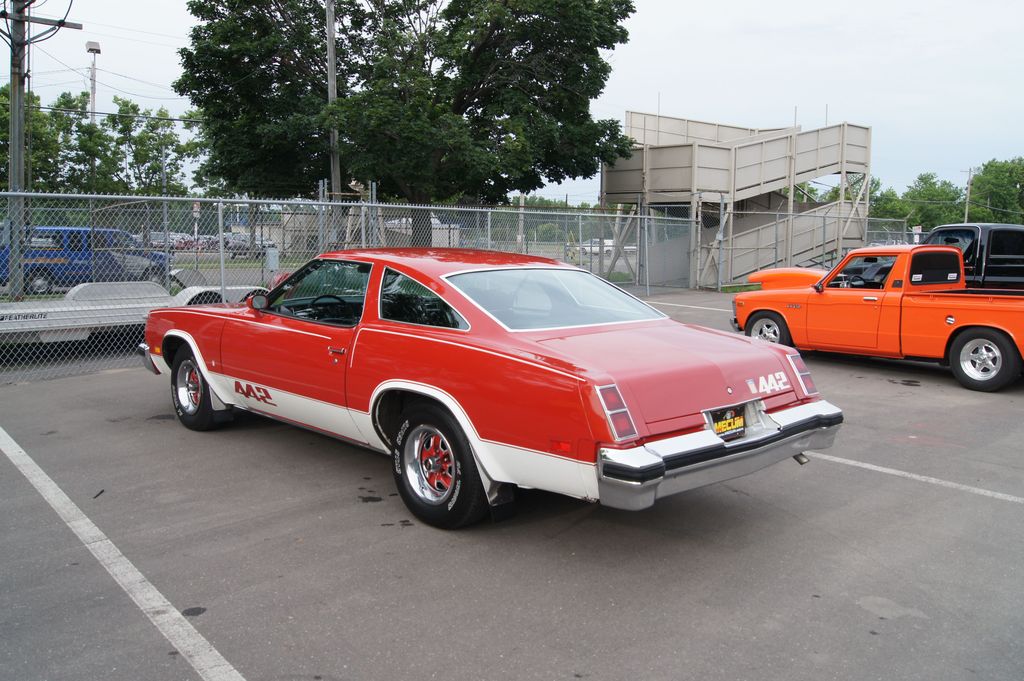
14. **Oldsmobile Cutlass**The Oldsmobile Cutlass was, for a period, one of America’s best-selling cars, a true juggernaut. For Baby Boomers, it epitomized style and reliability, a workhorse that consistently delivered. It represented a sensible, attractive choice for families and individuals, embodying trustworthy American engineering.
Boomers cherished the Cutlass for its widespread appeal, comfortable ride, and practical versatility. It was a familiar sight, a testament to its solid reputation and ability to meet diverse needs. It wasn’t flashy, but it was dependably good, a true favorite.
Today, Millennials pass over the Cutlass. In their quest for cars with better performance and modern technologies, the Cutlass simply falls short. Its style looks dated, and technological offerings are archaic, defined by what it *doesn’t* have rather than its once solid qualities.
Car Model Information: 1972 Oldsmobile Cutlass
Caption: 1971 Oldsmobile Cutlass Supreme Convertible
Name: Oldsmobile Cutlass
Manufacturer: Oldsmobile
Production: 1961–1999
Successor: Oldsmobile Intrigue
Class: Compact car
Categories: 1970s cars, 1980s cars, 1990s cars, All Wikipedia articles needing clarification, All articles that may contain original research
Summary: The Oldsmobile Cutlass was a series of automobiles produced by General Motors’ Oldsmobile division between 1961 and 1999. At its introduction, the Cutlass was Oldsmobile’s entry-level model; it began as a unibody compact car, but saw its greatest success as a body-on-frame intermediate. The Cutlass was named after Vought F7U Cutlass, as well as the type of sword, which was common during the Age of Sail.
Introduced as the top trim level in Oldsmobile’s compact F-85 Series, the Cutlass evolved into a distinct series of its own, spawning numerous variants. These included the 4-4-2 muscle car in 1964, the upscale Cutlass Supreme in 1966, the high-performance Hurst/Olds in 1968, and the Vista Cruiser station wagon.
By the 1980s, Oldsmobile was using the Cutlass as a sub-marque, with numerous vehicle lines bearing the name simultaneously. The compact Cutlass Calais, midsize Cutlass Ciera, Cutlass Cruiser station wagon, and flagship midsize Cutlass Supreme were among the models available during this time.
In the 1990s, Oldsmobile began moving away from its traditional model lines, with other legacy vehicle nameplates like the 98 and 88 being discontinued in 1996 and 1999, respectively. The Cutlass name was likewise retired in 1999 in favor of the all-new Oldsmobile Alero, ending nearly 40 years of continuous Cutlass production.
Get more information about: Oldsmobile Cutlass
Buying a high-performing used car >>>
Brand: Oldsmobile Model: Cutlass
Price: $43,500 Mileage: 20,500 mi.
Read more about: Boomer Dream Machines: 14 Classic Car Icons Millennials Are Overlooking and Why They’re Missing the Mark
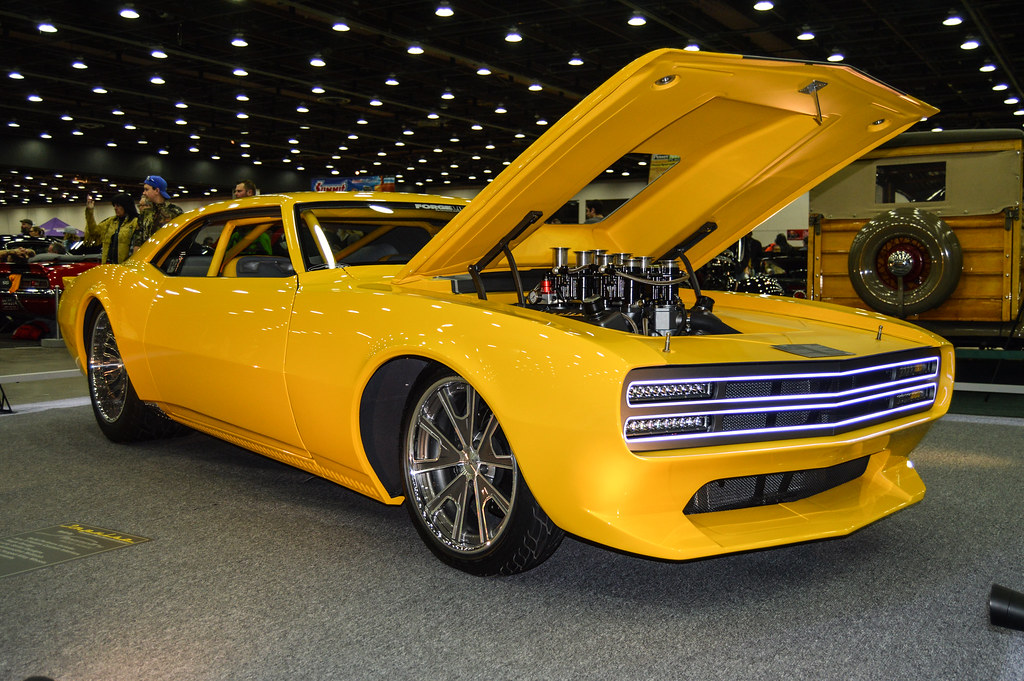
15. **Plymouth Barracuda**The Plymouth Barracuda – a name conjuring unadulterated muscle and bold design. For Baby Boomers, it was a muscle car classic, powerful and visually striking, epitomizing the era’s fascination with speed and aggressive styling. It was a loud, proud statement car, demanding attention.
Revered for its potent engine options, iconic body styles, and undeniable presence, the Barracuda was a dream car for many, representing American performance zenith. It wasn’t subtle; it simply *was*, a pure, distilled essence of muscle car glory.
Yet, Millennials find the Barracuda too brash and glaringly inefficient. Its over-the-top styling and prodigious thirst for gasoline alienate a generation valuing nuanced power and environmental responsibility. It remains a fascinating relic, appreciated in memory more than as a viable modern vehicle.
## The Overarching Reasons for Millennial Disinterest: A Deep Dive into the Generational Shift
So, while specific classic cars face rejection, this trend stems from a profound generational shift in automotive perception, pushing younger generations from ownership and driving. Financial prudence is key: debt-laden, recession-wary Millennials avoid large, depreciating capital purchases like cars, prioritizing savings over further debt.
Modern ridesharing alternatives further diminish ownership needs. Why endure parking, insurance, and repair hassles when an app summons a car? This convenience makes car ownership’s “bag of hassles” seem illogical. Moreover, driving itself is now often seen as a perfunctory chore, exacerbated by terrible traffic, making it an unwelcome obligation rather than freedom.
Finally, heightened ecological awareness and distrust of “hard sell” tactics play significant roles. Millennials are wary of gasoline cars’ environmental impact and car dealerships’ perceived dishonesty, preferring authenticity. Their detachment from mechanical understanding also reduces emotional attachment, lessening the car’s appeal as a personal possession and status symbol.
## What Happens When Driverless Cars Enter the Scene?
The million-dollar question: what shifts will occur with widespread self-driving cars? While current hesitancy isn’t solely due to waiting, autonomous marvels will drastically change future perceptions. If true driverless cars become readily available, buying a conventional car or even getting a license (beyond ID) would seem illogical.
Pundits predict the demise of individual ownership, envisioning corporate fleets of driverless vehicles roaming cities for revenue. However, a compelling, contrarian view suggests an unprecedented opportunity for individual ownership: a driverless car as a revenue-generating investment. When unused, your autonomous vehicle could earn money on a ridesharing network.
This redefines a car’s financial proposition. A costly, depreciating expense transforms into an income-augmenting asset. Automotive loans might shift to factor in this revenue stream, making driverless cars, despite potential higher upfront costs, more accessible and attractive for financially savvy younger generations looking to maximize income.
## Conclusion: The Road Ahead is Different, But Not Necessarily Empty
The automotive genie is undeniably out of the bottle; expecting younger generations to embrace traditional driving joys is over. The cultural sea-change, economic realities, and technological advancements are too compelling. Millennials and Gen Z will continue to avoid traditional driving and car ownership’s burdens, but this doesn’t necessarily spell the end of car ownership itself.
Car Model Information: 1971 Plymouth Barracuda
Caption: 1970 Hardtop Coupe
Name: Plymouth Barracuda
Manufacturer: Plymouth (automobile)
Production: 1964–1974
Assembly: Fenton, Missouri,Hamtramck, Michigan,Maywood, California,Windsor, Ontario
Layout: Front-engine, rear-wheel drive layout
Class: Pony car
Categories: 1970s cars, All articles with dead external links, All articles with unsourced statements, Articles with dead external links from February 2018, Articles with dead external links from January 2022
Summary: The Plymouth Barracuda is a two-door pony car that was manufactured by Chrysler Corporation from 1964 through 1974 model years.
The first-generation Barracuda was based on the Chrysler A-body and was offered from 1964 until 1966. A two-door hardtop (no B-pillar) fastback design, it shared a great majority of parts and bodywork with the Plymouth Valiant, except for the distinctive wraparound rear glass.
The second-generation Barracuda, though still Valiant-based, was heavily redesigned. Built from 1967 through 1969, it was available as a two-door in fastback, notchback, and convertible versions.
The third generation, offered from 1970 until 1974, was based on the Chrysler E-body, exclusive to it, and the slightly larger Dodge Challenger. A completely new design, the two-door Barracuda was available in hardtop and convertible body styles.
Get more information about: Plymouth Barracuda
Buying a high-performing used car >>>
Brand: Plymouth Model: Barracuda
Price: $69,999 Mileage: 12,468 mi.
Read more about: Why Millennials Are Swerving Away: Unpacking the Rejection of 12 Classic Boomer Cars
If driverless cars become revenue-generating assets – a strong possibility – then younger generations, with their savvy for income streams and deep-seated FOMO, will be driven by financial advantages to own these new-age vehicles, not out of love for the road, but as intelligent investments. The challenge is ensuring this future unfolds authentically, transforming our relationship with vehicles into one that is both practical and profitable.

